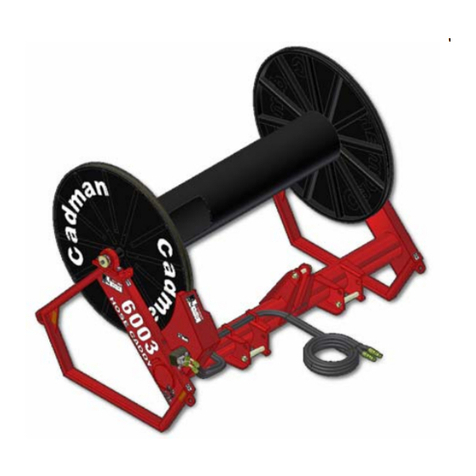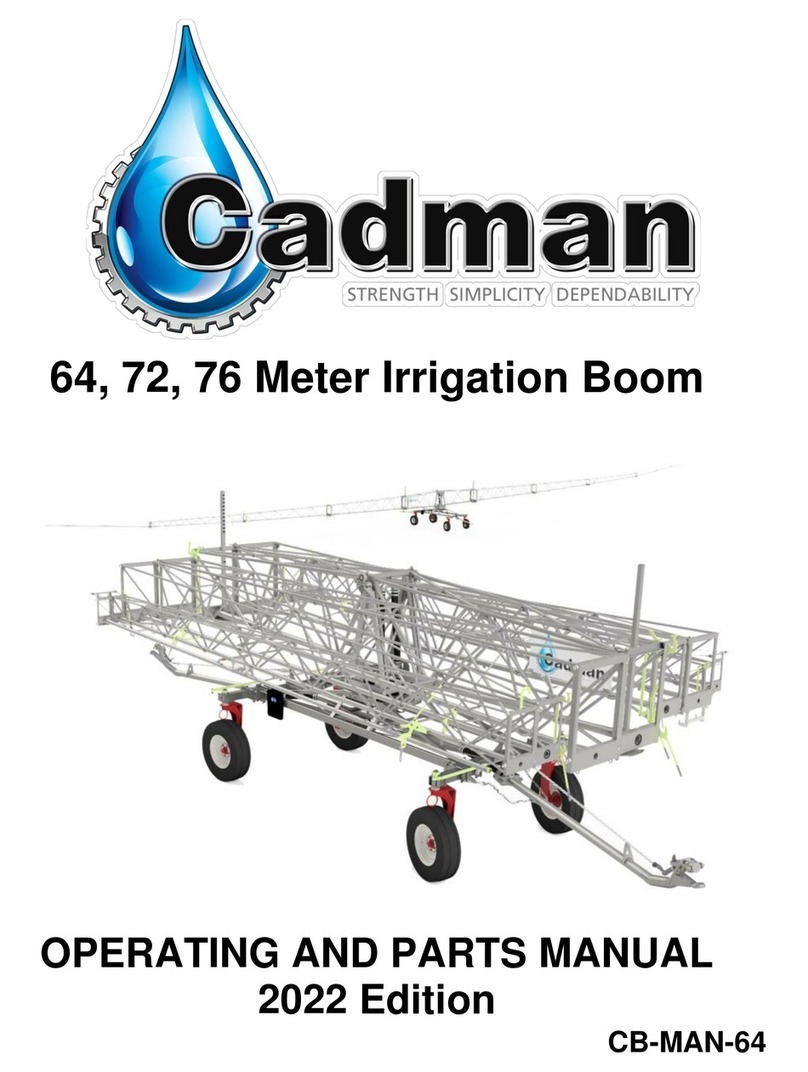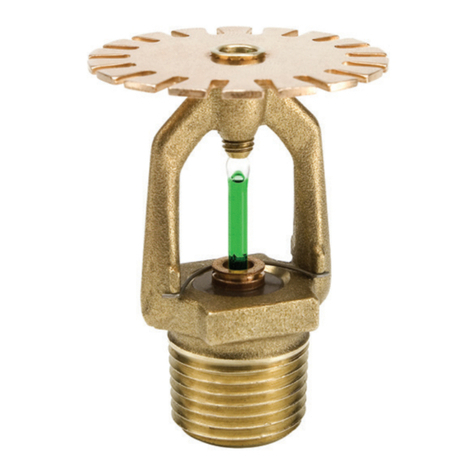
WARRANTY POLICY
CADMAN POWER EQUIPMENT LIMITED warrants that each machine it manufactures
shall be free from defects in materials and workmanship. The terms of this warranty are
as follows:
•All components manufactured by CADMAN POWER EQUIPMENT LIMITED
shall be warranted for a period of one (1) year from the date of delivery, except
the lower frame, upper frame and hose drum structures which shall be warranted
for a period of three (3) years.
•The polyethylene hose used on CADMAN TRAVELLERS will be warranted for a
period of five (5) years from the date of delivery, on a pro-rata basis. The
schedule for the polyethylene hose warranty is as follows:
1st to 10th month from the date of delivery is 100%,
11th to 60th month from the date of delivery, the warranty shall diminish
from 100% to 0% at a rate of 2% per month.
•CADMAN POWER EQUIPMENT LIMITED makes no warranty whatsoever in
regard to tires, engines, and other trade accessories used on its equipment. The
customer shall rely solely on the warranties offered (if any) by the respective
manufacturer of these trade accessories.
The sole obligation to CADMAN POWER EQUIPMENT LIMITED under this warranty is
limited to the repair or replacement of any part it manufactured, which, in the judgment of
CADMAN POWER EQUIPMENT LIMITED, failed under normal and proper use and
maintenance due to defective materials or workmanship. All freight charges incurred
shall be the sole responsibility of the customer.
CADMAN POWER EQUIPMENT LIMITED and it’s dealers (who are neither
authorized nor qualified to undertake any obligations on behalf of CADMAN
POWER EQUIPMENT LIMITED) DO NOT, under any circumstances, accept any
responsibility for any losses or costs incurred due to parts failure and/or delays during
the parts replacement process.
This warranty will be considered void if any alterations or modifications have been made
to the machine without the express written consent of CADMAN POWER EQUIPMENT
LIMITED outlining the nature and the extent of such modifications.
CADMAN POWER EQUIPMENT LIMITED, whose policy is one of continuous
improvement, reserves the right to change specifications and designs without notice or
incurring obligation.
The warranties expressed herein are non-transferable and replace any other warranties,
either written or verbal, which may have been given or implied.





























